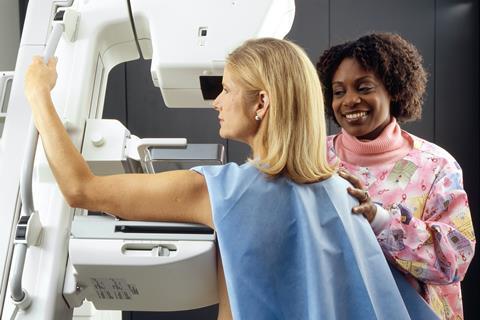The breast tumours of Asian, black and white women have very different cellular, microbial and genomic features that could potentially be used to personalize care or predict disease progression, according to new research by investigators at the Johns Hopkins Kimmel Cancer Center.

Potential race-specific microbial biomarkers of breast cancer identified by the researchers correlated with genes involved in tumour aggressiveness, blood vessel growth, tumor cell migration and metastasis, and the cancer pathways GLI1 and Notch. A description of the work was published in the journal npj Breast Cancer.
“The factors governing racial disparities in breast cancer are multifactorial and can include socioeconomic status, access to primary care, timely referrals, and health and nutrition,” says senior study author Dipali Sharma, Ph.D., professor of oncology at the Johns Hopkins University School of Medicine and a John Fetting Fund for Breast Cancer Prevention researcher.
“However, it is important to identify additional modifiers for these differences. Our study demonstrates that the microbiome and immune microenvironments of breast tumours also vary significantly among women of different ethnicities and could potentially be used as biomarkers to predict disease progression or response to treatment.”
Genome atlas
Sharma and colleagues examined genomic and metagenomic data from The Cancer Genome Atlas cohort, which included 1,018 patients with breast cancer categorized into Asian (65 patients), black (257 patients) and white (696 patients) groups via self-reporting.
They used a web-based tool called xCell to analyze the specific 64-cell signatures of breast tumours among the patients, finding that 11 of the cell types showed very distinct, statistically significant variations among races. Cellular differences were most pronounced between tumours from black and white women, while the tumours from Asian and Black women showed the least definitive differences compared to each other.
In studies analyzing the bacterial community composition among these tumours, investigators found that breast tumour microbes in Asian women did not vary significantly from either black or white women. However, the microbe compositions in breast tumours from black and white women were significantly diverse from each other.
Microbial biomarkers Acinetobacter, Citrobacter, Enterobacter, Staphylococcus, Paracoccus and Akkermansia were differentially abundant in breast tumours from black women compared with those from white women, while Actinomyces and Veillonella were plentiful in breast tumours from white women in comparison to black women. Pseudomonas and Methylobacter were among microbial biomarkers recognized from Asian women.
Investigators looked for correlations between genes and microbial biomarkers, finding that the gene GLI1 was positively correlated with a type of bacteria called Terrabacter in tumours from Asian and black women. These results indicate a possible role of microbes in the blood vessel development of tumours and therefore warrant further investigation, says first author Sheetal Parida, Ph.D., research associate in the Department of Oncology at the Johns Hopkins University School of Medicine.
Microbe-based biomarkers
The group is planning to validate their findings in a larger cohort. They also want to determine how microbes in breast tumours affect disease progression, which could be via secreted metabolites, Sharma says, and to develop microbe-based biomarkers: “The study paves the path for further explorations as we try to understand this whole network more mechanistically.”
White women have the highest lifetime risk of breast cancer incidence (13%), compared with American Indian and Alaska Native (8%), Asian and Pacific Islander (11%), Black (12%) and Hispanic (11%) women. However, the risk of breast cancer in black women under age 45 is 40% higher compared with their age-matched white counterparts, the paper noted.
Other study co-authors were Sumit Siddharth and Yuqing Xia of Johns Hopkins.
The work was supported by the National Cancer Institute (R01CA204555), the Breast Cancer Research Foundation (90047965), the Department of Defense Congressionally Directed Medical Research Programs Breast Cancer Research Program (BC191572, BC210668) and The Fetting Fund.
Topics
- Acinetobacter
- Actinomyces
- Akkermansia
- breast cancer
- Cancer Microbiology
- Citrobacter
- Dipali Sharma
- Economic Equality
- Enterobacter
- Human Microbiome
- Johns Hopkins Kimmel Cancer Center
- Methylobacter
- One Health
- Paracoccus
- Pseudomonas
- race-specific microbial biomarkers
- Research News
- Sheetal Parida
- Staphylococcus
- Sumit Siddharth
- Terrabacter
- The Cancer Genome Atlas
- tumours
- USA & Canada
- Veillonella
- Yuqing Xia







No comments yet